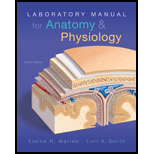
Let’s return to Kyle Boulard, whom we met in the previous chapter. After two days in the hospital, Mr. After two days in the hospital, Kyle Boulard has recovered from his acute diabetic crisis and his type 1 diabetes is once again under control. The last update on his chart before he is discharged includes the following:

BP 150/95, HR 75, temperature
Urine: pH 6.9, negative for glucose and
Mr. Boulard is prescribed a thiazide diuretic and an angiotensin converting enzyme (ACE) inhibitor. He is counseled on the importance of keeping his diabetes under control, taking his medications regularly, and keeping his outpatient follow-up appointments.
Where and how do thiazide diuretics act in the kidneys and how does this reduce blood pressure?
At his two-week appointment at the outpatient clinic, Mr. Boulard complains of fatigue, weakness, muscle cramps, and irregular heartbeats. A physical examination and lab tests produce the following observations:
BP 133/90, HR 75
Blood K+ 2.9 mEq/L (normal 3.5–5.5 mEq/L); blood Na+ 135 mEq/L (normal 135–145 mEq/L)
Urine K+ 55 mEq/L (normal <40 mEq/L); urine Na+ 21 mEq/L (normal >20 mEq/L)
Want to see the full answer?
Check out a sample textbook solution
Chapter 24 Solutions
Laboratory Manual for Anatomy & Physiology (6th Edition) (Anatomy and Physiology)
- Lisa Smith (LS) is brought to the emergency department [ER] for management of accidental acute poisoning. She is nonresponsive and admitted to the critical care unit [CCU] to be closely monitored. LS has no urinary output, and her laboratory values are serum K+ = 6.7 mEq/L; serum Na+ = 177 mEq/L; arterial blood gases [ABGs]: pH = 7.13, PaCO2 = 35 mmHg, HCO3- = 16 mEq/L, PaO2 = 89 mmHg, and oxygen saturation = 94%. What electrolyte disturbances need to be monitored at this time? What clinical signs & symptoms should the nurse be assessing LP, at this time, for the electrolyte disturbances?arrow_forwardHematology Data: 24 hour urine volume: 1,000 mL; Serum Creatinine: 2.0 mg/dL; Urine Creatinine: 200 mg/dL What's the calculation for the Creatinine clearance? Please show steps, thank you!arrow_forwardAn 80-year-old woman was admitted with a diagnosis of hypertension, congestive heart failure, anemia, possible diabetes, and chronic renal failure. Her blood workup shows a BUN level of 58 mg/dL and a plasma creatinine of 6.2 mg/dL. What is the most probable cause of the patient’s elevated urea nitrogen?arrow_forward
- In reviewing the patient’s current information, a concern exists that acute kidney injury has developed. Select to highlight the laboratory information that would support this concern.UrinalysisCasts - +++Cola-color to urineProteinuriaBlood ValuesRBC - 3.9 cells/L (4.0-4.9 cells/L)Hgb 10 g/dL (12-16 g/dL)Hct-40% (37%-48%)WBC 11.0 cells/L (4.0-10.0 cells/L)Platelets - 140 cells/L (150-450 cells/L)Sodium - 140 mEq/L (135-145 mEq/L)Potassium - 4.5 mEq/L (3.5-5.2 mEq/L)BUN - 32 mg/dL (5-20 mg/dL)Creatinine 1.8 mg/dL (0.5-1.5 mg/dL)Blood Glucose - 180 mg/dL (nonfasting) (<200 mg/dL)AST-40 Units/mL (5-40 Units/mL)ALT - 30 Units/mL (5-35 Units/mL)Bilirubin (total)- 0.8 mg/dL (<1.0 mg/dL)Albumin - 4.0 (3.5-5.5 g/dL)PT-22 (11.5-14 seconds)arrow_forwardAnswer first question. What disorder is affecting this individual?arrow_forwardWhat are the following for each patient? Edward urine composition: _______ blood compostion: _______ Ariana urine composition: ________ blood composition: _______arrow_forward
- Mehmet Yavuz is 62 yo. He presented to the clinic and after having an HbA1c test (result 9%) was diagnosed with type 2 Diabetes mellitus. His cardiovascular risk was > 15% http://www.cvdcheck.org.au/ His renal health screen showed an eGFR 90 mL/min/1.73m2 with microalbuminuria of 3.5 mg/mmol. http://www.kidney.org.au/HealthProfessionals/DetectingCKD/tabid/632/Default.aspx He attended a podiatry appointment which detected decreased dorsalis pedis and posterior tibialis pulses in both legs . Management of his condition now includes the following: Exercise: at least 150 minutes of aerobic and 60 minutes of resistance exercise each week Diet: a plan worked out with an accredited dietician based on the Australian Dietary Guidelines (2013). Drug use: smoking cessation plan to stop cigarette use; alcohol consumption reduction to 1 - 2 full strength beers every second day Weight loss: Mehmet aims to lose 5 kg over the first 6 - 8 weeks after diagnosis Medications: Jardiamet…arrow_forwardMehmet Yavuz is 62 yo. He presented to the clinic and after having an HbA1c test (result 9%) was diagnosed with type 2 Diabetes mellitus. His cardiovascular risk was > 15% http://www.cvdcheck.org.au/ His renal health screen showed an eGFR 90 mL/min/1.73m2 with microalbuminuria of 3.5 mg/mmol. http://www.kidney.org.au/HealthProfessionals/DetectingCKD/tabid/632/Default.aspx He attended a podiatry appointment which detected decreased dorsalis pedis and posterior tibialis pulses in both legs . Management of his condition now includes the following: Exercise: at least 150 minutes of aerobic and 60 minutes of resistance exercise each week Diet: a plan worked out with an accredited dietician based on the Australian Dietary Guidelines (2013). Drug use: smoking cessation plan to stop cigarette use; alcohol consumption reduction to 1 - 2 full strength beers every second day Weight loss: Mehmet aims to lose 5 kg over the first 6 - 8 weeks after diagnosis Medications: Jardiamet…arrow_forwardMehmet Yavuz is 62 yo. He presented to the clinic and after having an HbA1c test (result 9%) was diagnosed with type 2 Diabetes mellitus. His cardiovascular risk was > 15% http://www.cvdcheck.org.au/ His renal health screen showed an eGFR 90 mL/min/1.73m2 with microalbuminuria of 3.5 mg/mmol. http://www.kidney.org.au/HealthProfessionals/DetectingCKD/tabid/632/Default.aspx He attended a podiatry appointment which detected decreased dorsalis pedis and posterior tibialis pulses in both legs. Management of his condition now includes the following: Exercise: at least 150 minutes of aerobic and 60 minutes of resistance exercise each week Diet: a plan worked out with an accredited dietician based on the Australian Dietary Guidelines (2013). Drug use: smoking cessation plan to stop cigarette use; alcohol consumption reduction to 1 - 2 full strength beers every second day Weight loss: Mehmet aims to lose 5 kg over the first 6 - 8 weeks after diagnosis Medications: Jardiamet…arrow_forward
- Mehmet Yavuz is 62 yo. He presented to the clinic and after having an HbA1c test (result 9%) was diagnosed with type 2 Diabetes mellitus. His cardiovascular risk was > 15% http://www.cvdcheck.org.au/ His renal health screen showed an eGFR 90 mL/min/1.73m2 with microalbuminuria of 3.5 mg/mmol. http://www.kidney.org.au/HealthProfessionals/DetectingCKD/tabid/632/Default.aspx He attended a podiatry appointment which detected decreased dorsalis pedis and posterior tibialis pulses in both legs. Management of his condition now includes the following: Exercise: at least 150 minutes of aerobic and 60 minutes of resistance exercise each week Diet: a plan worked out with an accredited dietician based on the Australian Dietary Guidelines (2013). Drug use: smoking cessation plan to stop cigarette use; alcohol consumption reduction to 1 - 2 full strength beers every second day Weight loss: Mehmet aims to lose 5 kg over the first 6 - 8 weeks after diagnosis Medications: Jardiamet…arrow_forwardMehmet Yavuz is 62 yo. He presented to the clinic and after having an HbA1c test (result 9%) was diagnosed with type 2 Diabetes mellitus. His cardiovascular risk was > 15% http://www.cvdcheck.org.au/ His renal health screen showed an eGFR 90 mL/min/1.73m2 with microalbuminuria of 3.5 mg/mmol. http://www.kidney.org.au/HealthProfessionals/DetectingCKD/tabid/632/Default.aspx He attended a podiatry appointment which detected decreased dorsalis pedis and posterior tibialis pulses in both legs. Management of his condition now includes the following: Exercise: at least 150 minutes of aerobic and 60 minutes of resistance exercise each week Diet: a plan worked out with an accredited dietician based on the Australian Dietary Guidelines (2013). Drug use: smoking cessation plan to stop cigarette use; alcohol consumption reduction to 1 - 2 full strength beers every second day Weight loss: Mehmet aims to lose 5 kg over the first 6 - 8 weeks after diagnosis Medications: Jardiamet…arrow_forwardMehmet Yavuz is 62 yo. He presented to the clinic and after having an HbA1c test (result 9%) was diagnosed with type 2 Diabetes mellitus. His cardiovascular risk was > 15% http://www.cvdcheck.org.au/ His renal health screen showed an eGFR 90 mL/min/1.73m2 with microalbuminuria of 3.5 mg/mmol. http://www.kidney.org.au/HealthProfessionals/DetectingCKD/tabid/632/Default.aspx He attended a podiatry appointment which detected decreased dorsalis pedis and posterior tibialis pulses in both legs. Management of his condition now includes the following: Exercise: at least 150 minutes of aerobic and 60 minutes of resistance exercise each week Diet: a plan worked out with an accredited dietician based on the Australian Dietary Guidelines (2013). Drug use: smoking cessation plan to stop cigarette use; alcohol consumption reduction to 1 - 2 full strength beers every second day Weight loss: Mehmet aims to lose 5 kg over the first 6 - 8 weeks after diagnosis Medications: Jardiamet…arrow_forward
